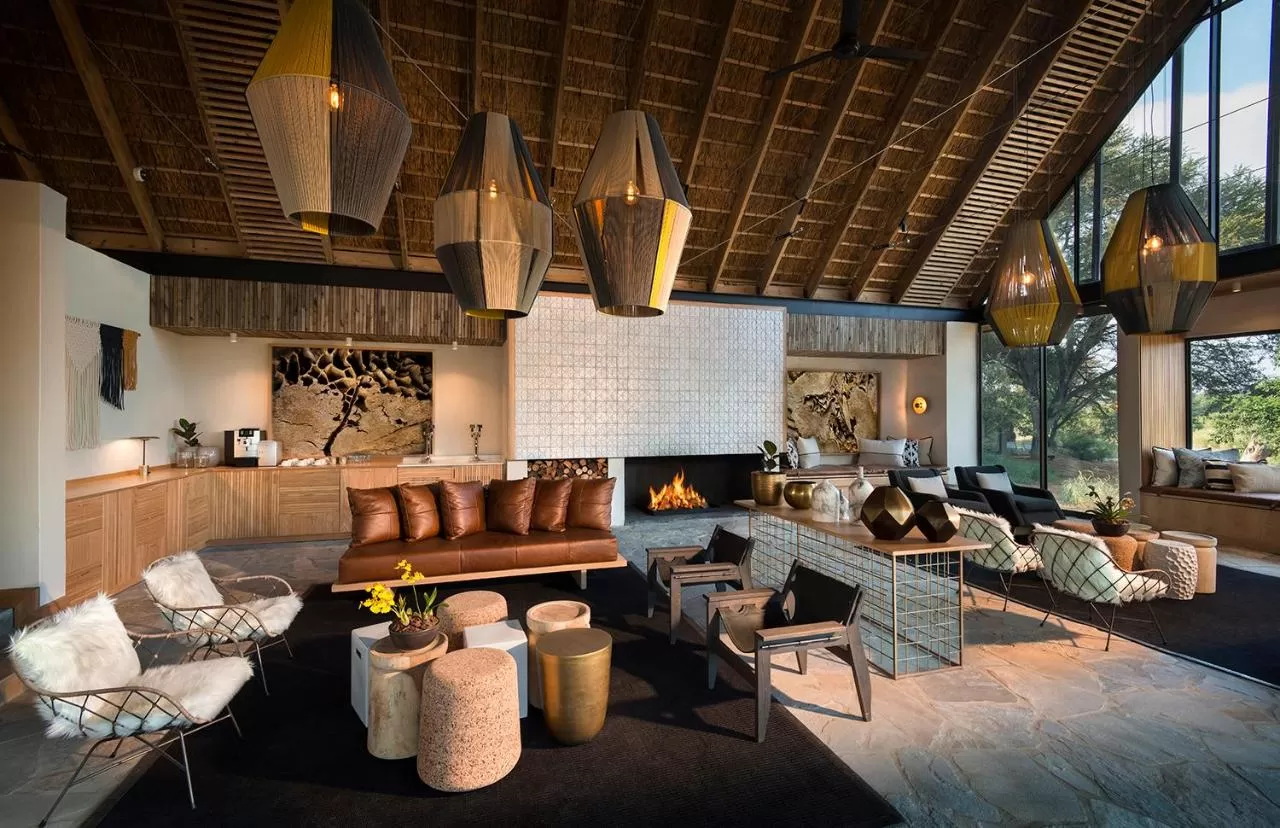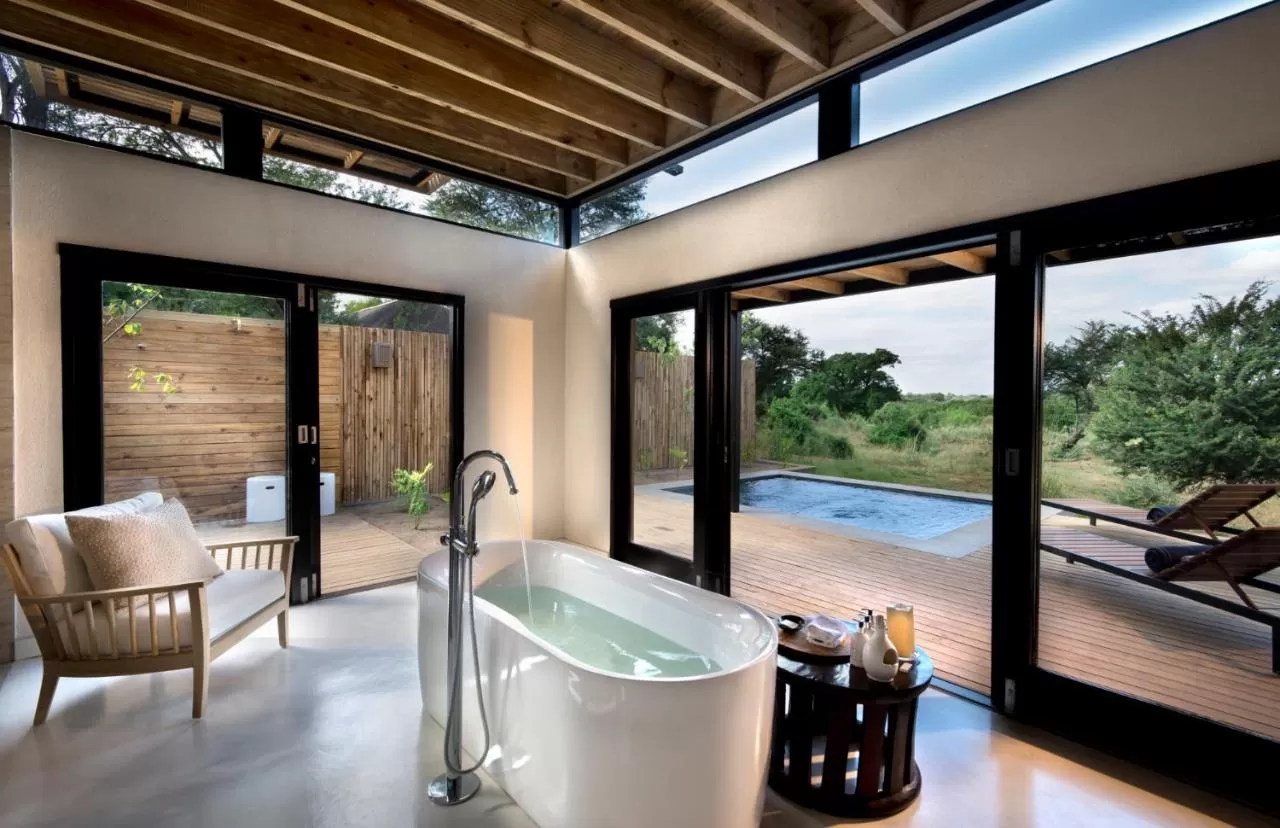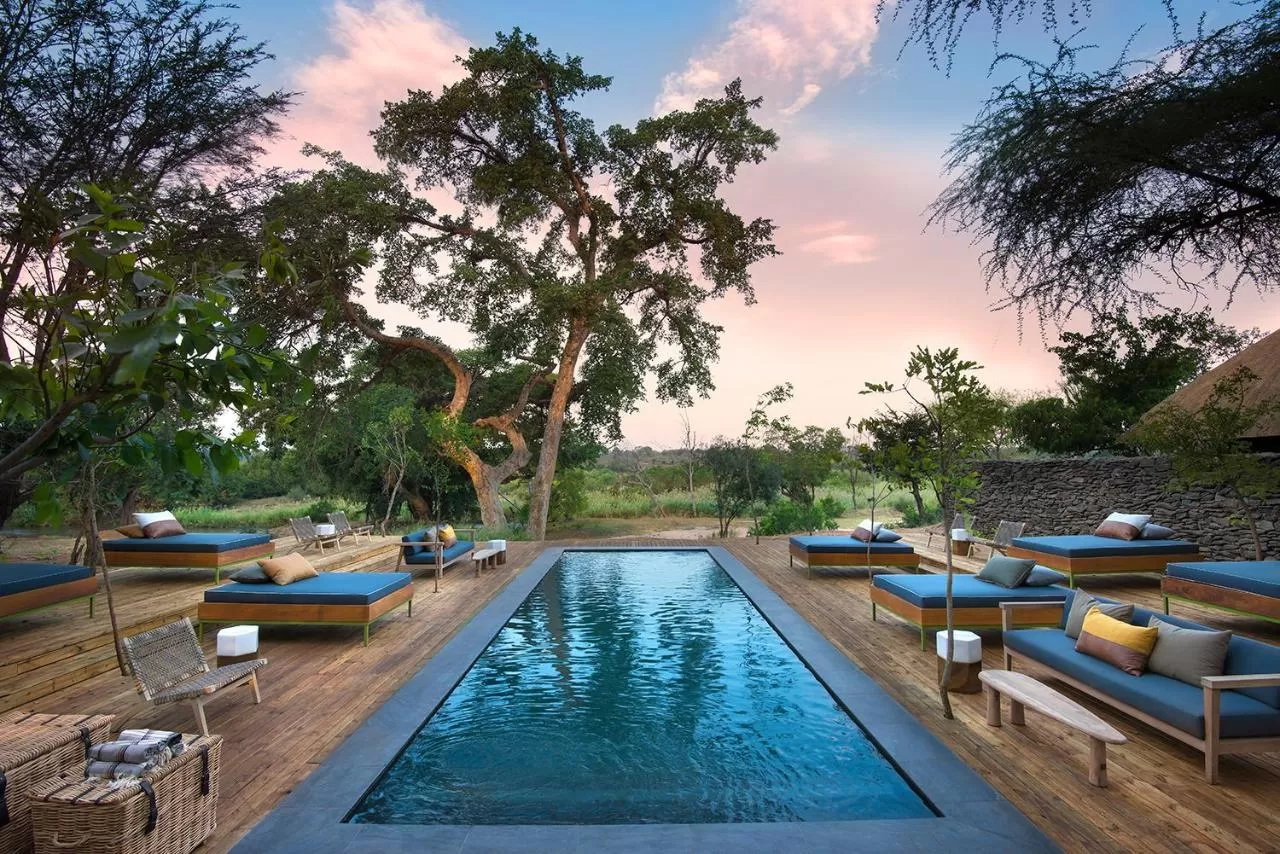One of South Africa's most spectacular private game reserves
Disclosure: Bear in mind that some of the links in this post are affiliate links and if you go through them to make a purchase we will earn a commission at no additional cost to you. We chose these companies / hotels because of their quality and not because of the commission we receive from your purchases.
Sabi Sand Game Reserve is one of South Africa's most spectacular private game reserves, and also the most exclusive. Although you pay a lot more in a private game reserve than in a national park, you do get excellent and personal guidance. You will travel through the reserve in very small groups led by real safari experts. Plus, you're staying at luxurious accommodation.
The Sabi Sand Game Reserve is huge with 65,000 hectares in size and is located in Mpumalanga, south of Kruger National Park. The game reserve takes its name from two major rivers that cross the area; the Sabie and the Sand River. Because there are no fences between these parks, the wildlife migrates back and forth. In this reserve all the members of the Big Five are present and the chances seeing them is high.
Where to stay
There are a few very nice places to stay in this area, but our absolute favorite is the Lion Sands River Lodge. The modern mix with authentic South African design is out of this world. The lodge has 20 luxury cottages with a spacious bathroom with a bathtub and separate shower. Large sliding doors open to the porch overlooking the breath taking Sabie River.
The lodge has 20 luxury cottages with a spacious bathroom with a bathtub and separate shower. Large sliding doors open to the porch overlooking the breath taking Sabie River. All sheltered under leafy trees, in the middle of the bush. You'll love dipping into the pool after a hot day of exploring the Savannah.
All sheltered under leafy trees, in the middle of the bush. You'll love dipping into the pool after a hot day of exploring the Savannah.
Environmental programs
At the Sabi Sand Game Reserve they aim to promote and conserve wildlife, flora and fauna in the area and to provide a wilderness sanctuary that protects and preserves every inhabitant within its borders.. As a result the Sabi Sand Reserve has become known as the birthplace of sustainable wildlife tourism in the whole of Southern Africa.
The private lodges run a number of environmental management programs where they tackle problems such as alien plant control and many other programs. As the game reserve is private, visitors can only enter the wilderness area when they have a booking at one of the private lodges. This in turn helps to limit the influx of human beings into the area and the impact that they place on the environment. There is also a strict policy within the reserve that limits additional lodges being built on the land within certain space parameters, ensuring the number of visitors, bricks and concrete on the reserve does not increase beyond the land's capacity. Source: Sabi Sansa Reserve
Best time to visit
The good thing about South Africa is that you can actually go there all year round. A holiday to South Africa is always a good idea, both in the African summer and in winter. Of course, depending on the 'purpose' of your vacation.
South Africa has four different seasons, although the difference between the seasons is usually not as clear and visible as in for example Europe. Sabi Sand Game Reserve has a savannah climate. The average temperature is around 30 degrees Celsius (86 degrees Fahrenheit) all year round. If you prefer not to have rain during your safari then May to September is ideal. There is relatively little rain and the temperatures are pleasant to go out.
The chance that you see the entire Big Five is a little higher in winter (June - August). Through dry periods, temporary water sources become exhausted and the animals migrate to rivers or ponds. In addition, there are often less leaves on the trees during this period, making the animals more visible.
In summer (December - February) the temperature in the Sabi Sand Game Reserve is higher. The chance of a strong storm is also the highest in this period. Because of these showers the humidity is high, also the South Africans themselves have summer holidays in the months of December and January. Which means it is often busier.
During autumn and spring (September - November and March - May) it is usually a little quieter with visitor numbers and the climate is less humid than in summer. In addition, the days and nights are pleasant in terms of temperature. An ideal climate for safaris or bushwalks. Click here for more climate charts of the neighboring Kruger Park.